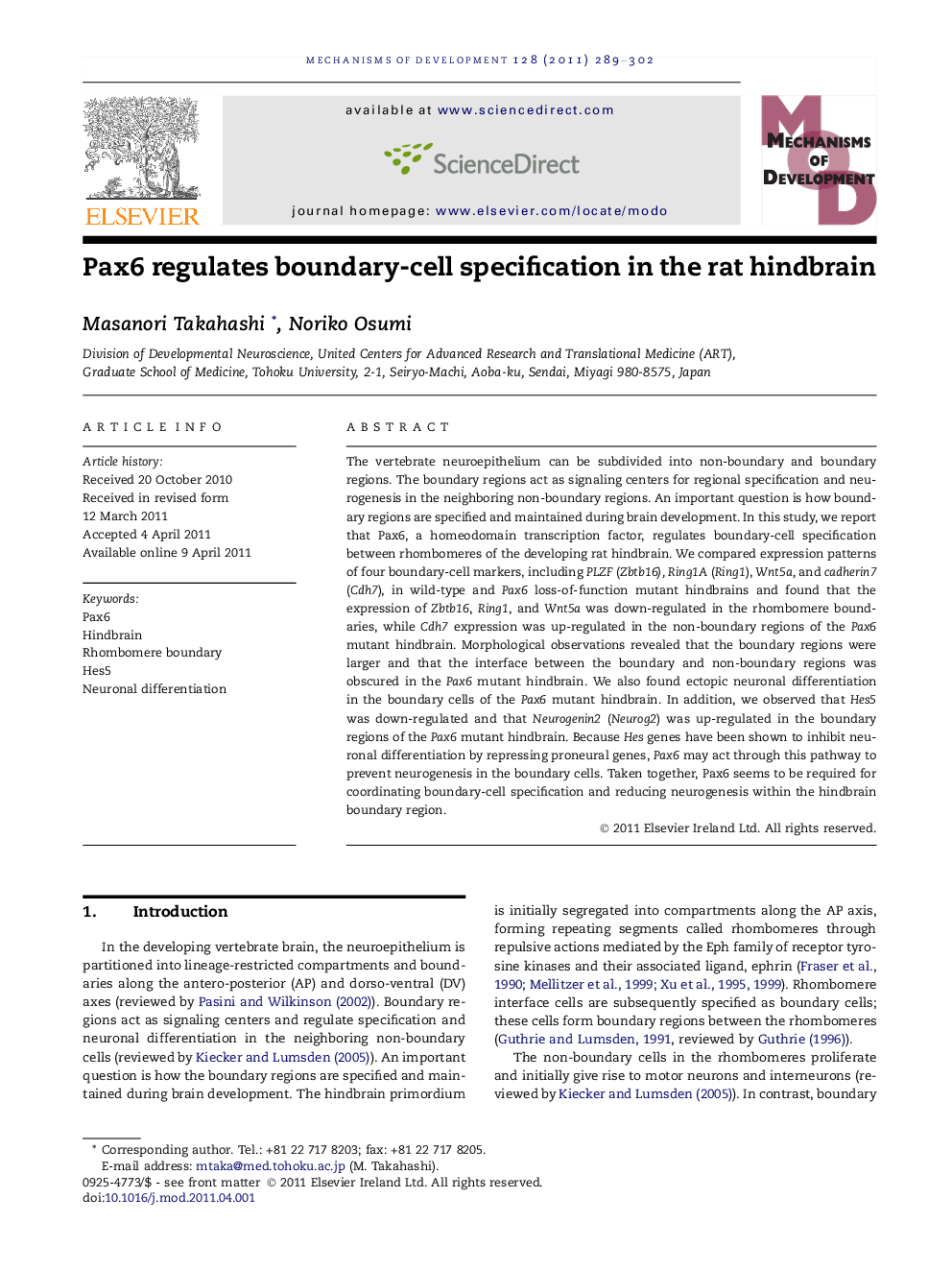| Article ID | Journal | Published Year | Pages | File Type |
|---|---|---|---|---|
| 8476230 | Mechanisms of Development | 2011 | 14 Pages |
Abstract
The vertebrate neuroepithelium can be subdivided into non-boundary and boundary regions. The boundary regions act as signaling centers for regional specification and neurogenesis in the neighboring non-boundary regions. An important question is how boundary regions are specified and maintained during brain development. In this study, we report that Pax6, a homeodomain transcription factor, regulates boundary-cell specification between rhombomeres of the developing rat hindbrain. We compared expression patterns of four boundary-cell markers, including PLZF (Zbtb16), Ring1A (Ring1), Wnt5a, and cadherin7 (Cdh7), in wild-type and Pax6 loss-of-function mutant hindbrains and found that the expression of Zbtb16, Ring1, and Wnt5a was down-regulated in the rhombomere boundaries, while Cdh7 expression was up-regulated in the non-boundary regions of the Pax6 mutant hindbrain. Morphological observations revealed that the boundary regions were larger and that the interface between the boundary and non-boundary regions was obscured in the Pax6 mutant hindbrain. We also found ectopic neuronal differentiation in the boundary cells of the Pax6 mutant hindbrain. In addition, we observed that Hes5 was down-regulated and that Neurogenin2 (Neurog2) was up-regulated in the boundary regions of the Pax6 mutant hindbrain. Because Hes genes have been shown to inhibit neuronal differentiation by repressing proneural genes, Pax6 may act through this pathway to prevent neurogenesis in the boundary cells. Taken together, Pax6 seems to be required for coordinating boundary-cell specification and reducing neurogenesis within the hindbrain boundary region.
Related Topics
Life Sciences
Biochemistry, Genetics and Molecular Biology
Cell Biology
Authors
Masanori Takahashi, Noriko Osumi,
